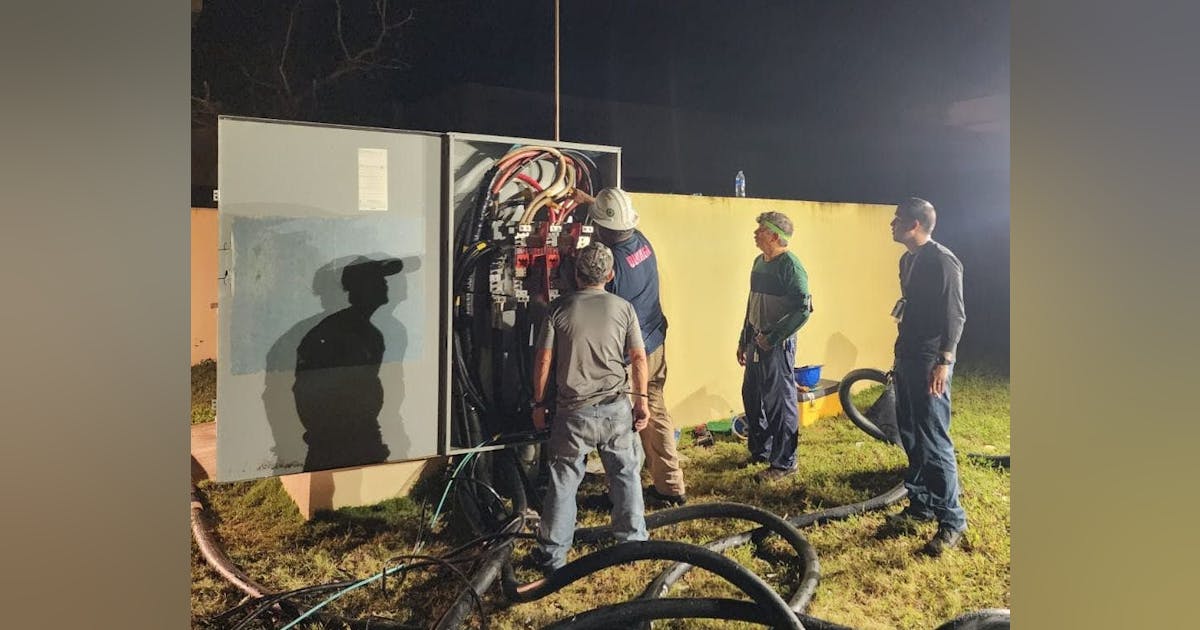

Summary points:
- Army awards $2.3 million contract to boost grid resilience through the Defense Innovations to Mitigate Electricity Grid Risk program.
- Program focuses on EMP and cyber threat protection, including hardening infrastructure, developing microgrids, and improving power system redundancy.
- Work may lead advanced energy solutions like modular microgrids, hydrogen batteries, and secure grid architectures for military installations.
ALEXANDRIA, Va. – The U.S. Army Corps of Engineers needed ways to strengthen the electric grid against physical threats such as electromagnetic pulse (EMP) attacks, as well as against cyber threats. They found a solution from Converge Strategies LLC in Boston.
Officials of the Army Corps of Engineers Humphreys Engineer Center Support Activity (HECSA) in Alexandria, Va., announced a $2.3 million contract to Converge Strategies on Monday for the Defense Innovations to Mitigate Electricity Grid Risk program.
Defense Innovations to Mitigate Electricity Grid Risk involves strengthening grid resilience, developing microgrid systems for defense, hardening infrastructure against physical and cyber threats, and adopting advanced technologies for reliability and security.
Enhancing power transmission
Electric grid resilience and transmission expansion involves enhancing power transmission to ensure reliable energy supply for the military. This can include strengthening power infrastructure, expanding transmission lines, and enhancing redundancy to reduce vulnerabilities to regional outages.
Microgrids for defense energy architecture involves developing microgrids based on small modular reactors, renewable energy, and advanced energy storage like hydrogen batteries to create self-sufficient regional power sources that can operate independently from the national grid. This approach can protect military installations from widespread grid failures from cyber attacks, EMP attacks, or similar threats.
Hardening against EMP and cyber attacks can involve technologies like Faraday cages, undergrounding power lines, reactors, and improving physical security to protect the grid from electromagnetic and cyber attack.
Tell me more about how EMP attacks can affect the electric grid …
- Electromagnetic pulse (EMP) attacks can severely disrupt or destroy components of the electric grid. An EMP is a burst of electromagnetic energy that can be from solar flares or from a high-altitude nuclear explosion or specialized non-nuclear EMP weapon. There are three phases of EMP effects: fast pulses, which happen in nanoseconds; intermediate pulses, which happen in milliseconds; and slow pulses, which take seconds to minutes. Fast pulses can damage or destroy electronics and control systems. Intermediate pulses pose little threat. Slow pulses, however, can damage high-voltage transformers, which are critical and difficult to replace. Disabled grid-control systems can cause cascading failures, leading to power plant shutdowns.
Grid-enhancing technologies can involve advanced conductors and real-time grid management to enhance the capacity and efficiency of existing transmission lines; optimizing grid performance; and reducing failure points.
Testing and research can involve establishing test beds for physical and cyber security to assess vulnerabilities and improve grid defense. Strategic planning and collaboration can involve working with state and local governments to secure civilian power for the military.
For more information contact Converge Strategies online at https://convergestrategies.com, or the Army Corps of Engineers at www.usace.army.mil.




